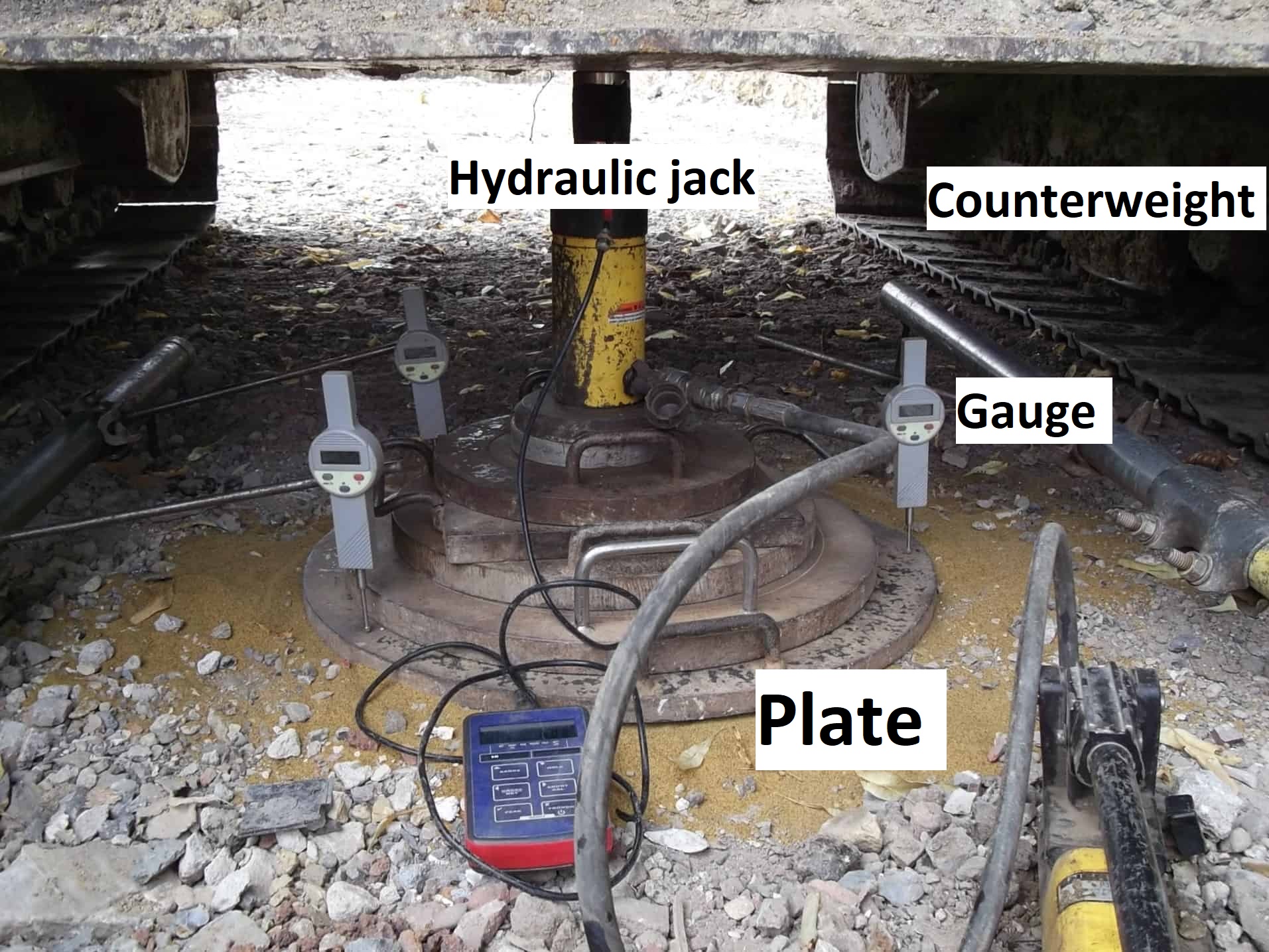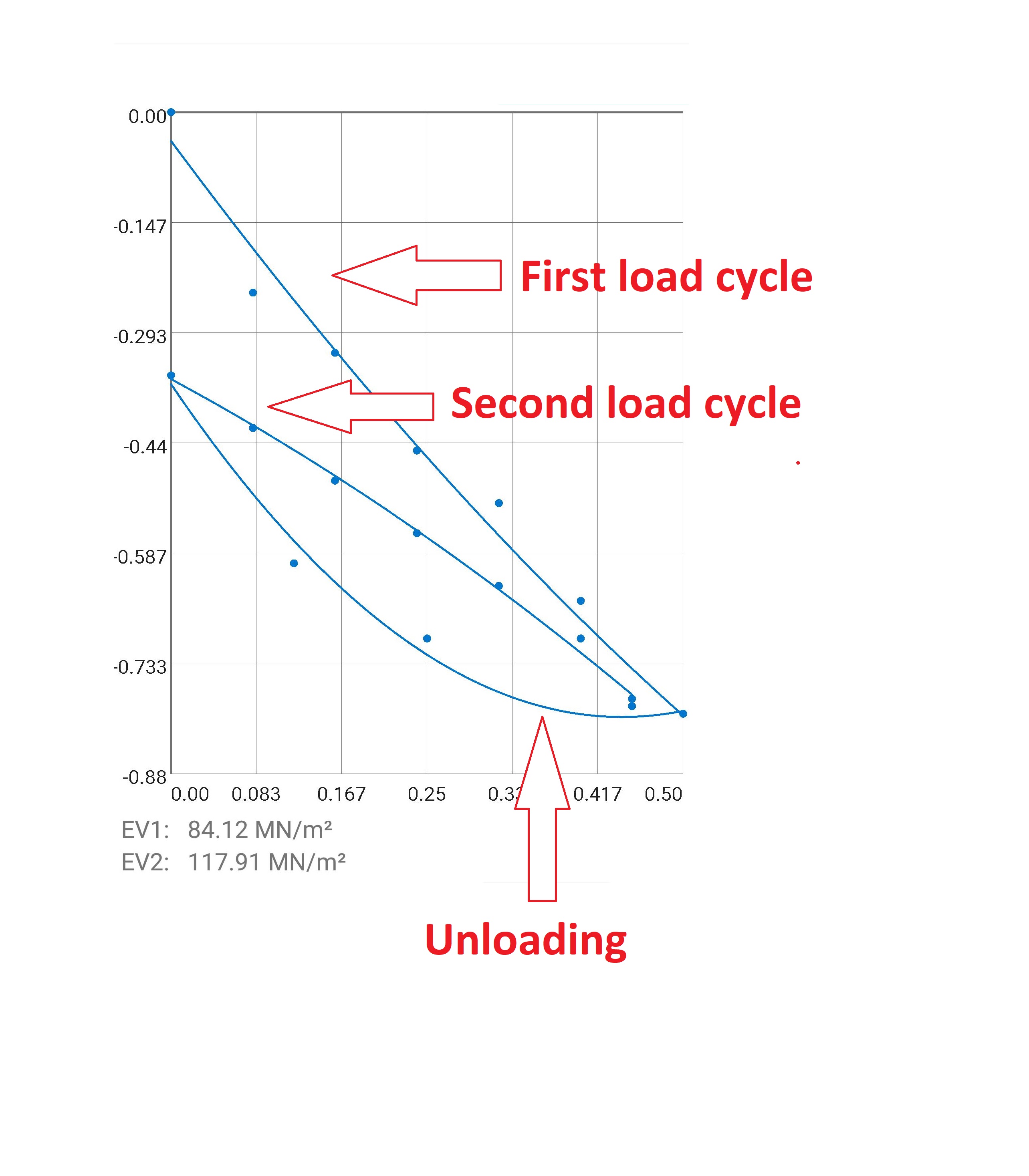
Plate bearing test (also known as “plate load”) is one of the in situ investigations most frequently used during the construction of wind farms.
Its objective is to confirm that roads and hardstands meet the minimum requirements for compaction and bearing capacity.
Basically, it is performed pushing a steel plate against the material to be tested (usually the subgrade or the surface layer of roads and hardstands).
Three different standard plate sizes are available – the larger the diameter, the greatest the depth reach by the test. The biggest plate (762mm) is the one usually used in wind farms.
The plate is loaded by hydraulic jacks and it is connected to a counterweight (usually a truck or a construction equipment with a weight of several tonnes).
The jacks push the plate and the settlements are then measured at set increments of the loads.
Two different load cycles are performed (that is, the plate is loaded, unloaded and subsequently loaded again).
The results of the test are two “load / settlement curves”, one for each load cycle. With the curves two value called “Strain modulus” can be calculated – one for the first loading cycle (Ev1) and one for the second (Ev2).
I will not enter in the detail of how Ev1 and Ev2 are calculated (nothing too complex by the way – the formula is relatively simple).
Ev1 and Ev2 gives you a value in MN/m2 linked to the bearing capacity, while their ratio (Ev2/Ev1) will tell you if the compaction is sufficient.
Usually this test is done in wind farms road (every 500m or every Km are two standard values) and in the cranes hardstands (at least one test for hardstand, but frequently I have seen 4 tests, one below each of the crane legs).
The test is relatively slow: usually only a few positions can be tested every day. If needed the results can also be correlated with CBR values.

Leave a Reply